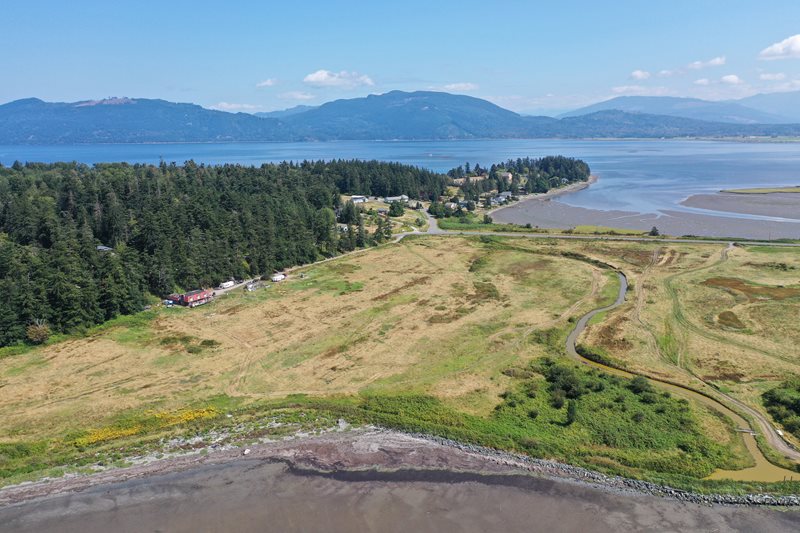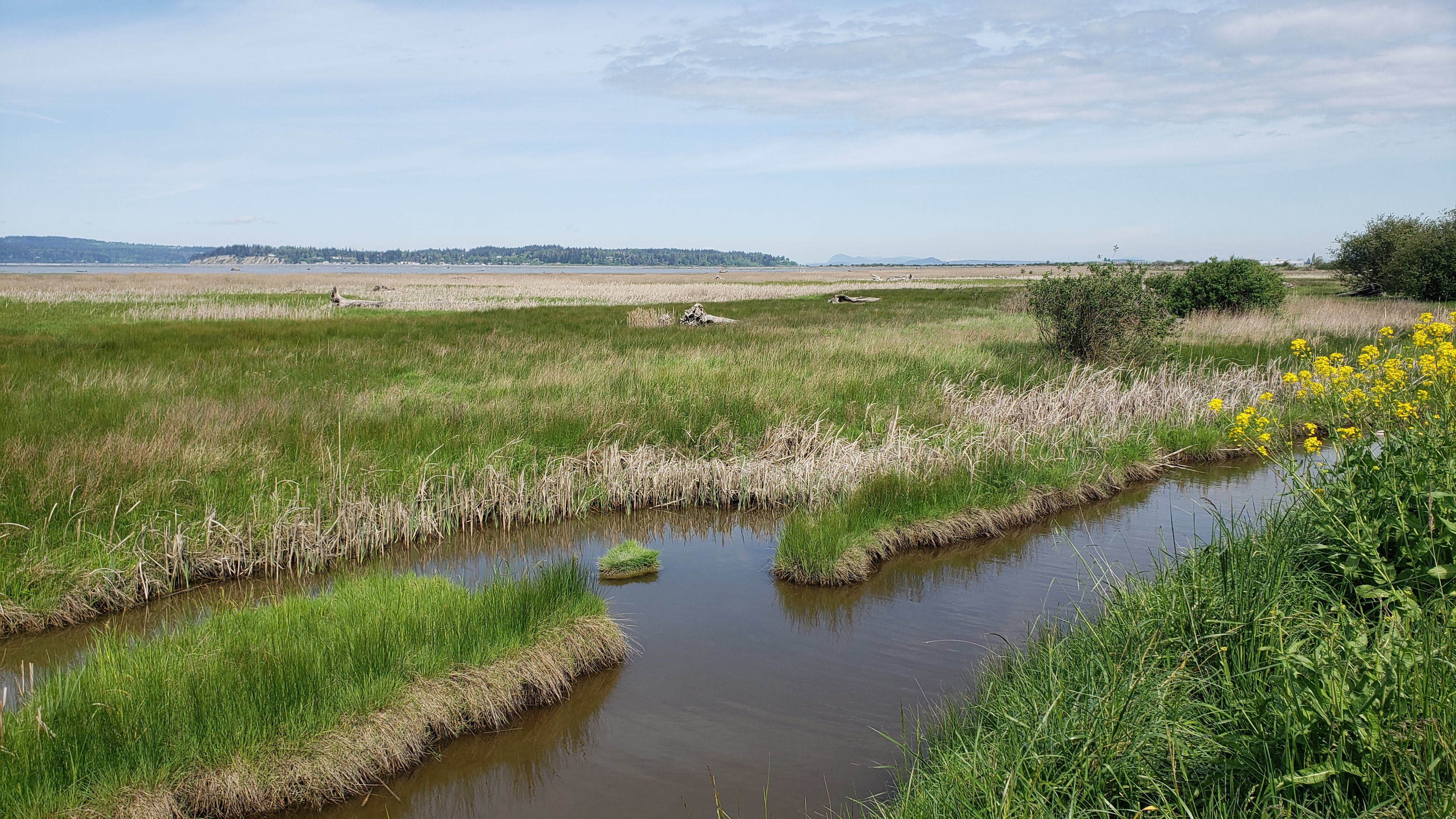
Forage fish and eelgrass communities in Padilla and Samish bays will benefit after 51 acres of coastal wetlands, field, and forest habitat and 2,500 feet of marine coastline are permanently protected along the bays. Photo courtesy Skagit Land Trust.
We're excited to announce we've secured nearly $3.6 million in federal National Coastal Wetlands Conservation grants to protect about 725 acres of coastal wetlands in Skagit, Snohomish, Thurston, and Whatcom counties.
Coastal wetlands bordering Puget Sound and other state marine waters often rival tropical rain forests and coral reefs as some of the most diverse, productive ecosystems on the planet. Coastal wetlands include estuarine salt marshes as well as freshwater wetlands that extend inland within a watershed.
While U.S. states and territories are the only entities that can apply for the federal conservation grants, we work closely with our partners in local and tribal governments and conservation organizations to identify projects and develop wetland restoration and protection proposals for the federal government to consider.
The conservation program is managed by the U.S. Fish and Wildlife Service and funded in part through taxes paid on fuel and equipment purchases by recreational anglers and boaters. The federal program provides up to $1 million for individual wetland projects.
Washington's invaluable wetlands
Wetlands play a critical role in slowing flood waters and snowmelt, filtering pollutants, recharging drinking water aquifers, and managing risks from climate change by absorbing greenhouse gases and storing carbon, thus preventing them from entering the atmosphere.
Washington’s coastal wetlands help support endangered Southern Resident orcas and other marine mammals, salmon, forage fish, shellfish, waterfowl and shorebirds, and an array of other plant and animal species.
To date, we've helped projects totaling about $127 million conserve more than 13,000 acres of coastal wetlands and shorelines in the state.
The list below provides an overview of the four 2021 coastal wetland conservation projects. We also posted more details about each particular project.
In this phase of the project, over 500 acres of former coastal wetlands will be acquired and protected in Snohomish County. Photo courtesy of Jason Griffith.
Stillaguamish Tidal Wetland Acquisition Phase 2 ($1 million) — Working with the Stillaguamish Tribe to acquire and permanently protect 537 acres of former coastal wetlands in Snohomish County. This project is the second step toward restoring tidal and riverine influence to a large swath of land diked in the late 1800s. The project will benefit a wide range of fish and wildlife species, including Endangered Species Act-listed Chinook salmon populations in the Stillaguamish and Skagit rivers. The project will also benefit waterfowl and shorebirds.
View of Little Squalicum Estuary at sunset. Photo courtesy of Garth Baldwin.
Little Squalicum Estuary Protection ($1 million) — working with the City of Bellingham to restore 4.85 acres of coastal wetland habitat in Bellingham Bay, just east of the Nooksack River delta in Whatcom County. The project will restore important tidal and sedimentary processes, remove a fish passage barrier at the mouth of Little Squalicum Creek, and re-establish a 2.4-acre estuary. The estuary will provide rearing and foraging habitat for endangered juvenile Chinook salmon, steelhead and bull trout, and Coho salmon. This project will also redirect recreational activities to more ecologically-appropriate parts of Little Squalicum Park.
Padilla and Samish Bays Coastal Protection ($875,000 ) — in partnership with the Skagit Land Trust, the project will acquire and permanently protect 50.6 acres of wetlands, field and forest habitat, an historic slough, and with 2,500 feet of marine coastline along two bays in northern Skagit County. The site supports freshwater wetlands, riparian slough habitat, beach habitat on Padilla Bay, and salt marsh and tidelands on Samish Bay. This habitat is beneficial to forage fish spawning and eelgrass communities and provides foraging habitat for a multitude of bird species.
This coastal wetland habitat along Nisqually Reach in Thurston County will be restored and protected. Photo courtesy of Eric Erler.
Nisqually Reach Coastal Protection and Restoration ($687,750) — in collaboration with Nisqually Land Trust, the project will protect 132 acres of coastal habitat along the southern edge of the Nisqually River Reach in Thurston County through a permanent conservation easement.
This restoration project will protect 7,830 feet of shoreline habitat critical for 70 species of migratory and coastal-dependent birds. It will also restore estuarine and marine habitats sustaining five species of salmon and other forage fish. The project will also restore degraded estuarine and forested areas within the project site.
Wetland tools and resources
Want to know more? We provide technical assistance and develop tools for local governments, consultants, and developers regarding the responsible management, regulation, and stewardship of wetlands.



.jpg)
